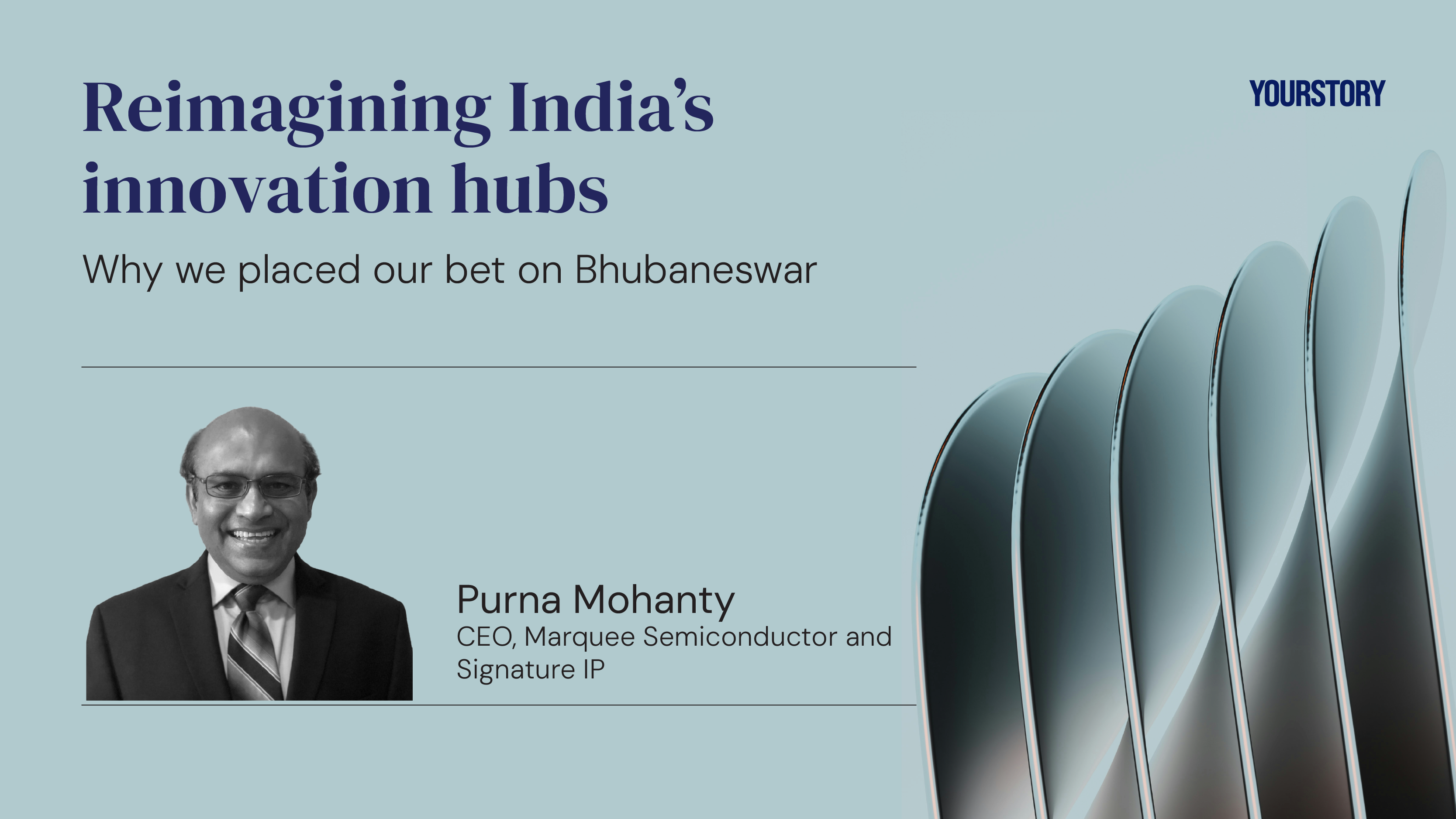By Purna Mohanty
Copyright yourstory

In this exclusive authored piece for YourStory’s latest report titled ‘Building Tomorrow’s GCCs’,
Purna Mohanty, CEO of Marquee Semiconductor and Signature IP, delves into how they are shaping India’s deep-tech future.
When the world thinks of semiconductor innovation, the names that come up are often predictable: Silicon Valley, Hsinchu, Bengaluru. Rarely does Bhubaneswar make the list. But that’s precisely why we chose it.
At Marquee Semiconductor and Signature IP, we’re building India’s deep-tech future from the inside out, one high-speed interface, one system-level design, and one bold decision at a time. And placing our GCC in Bhubaneswar wasn’t a compromise but a conscious strategy, one rooted in the belief that India’s next wave of innovation will not be confined to its metros.
A strategic choice, not a shortcut
Bhubaneswar isn’t just a “cost advantage” story. It’s a convergence of long-term potential—access to top-tier engineering talent, improving infrastructure, and a quality of life that promotes sustained creativity and retention.
Institutions like IIT Bhubaneswar, NIT Rourkela, VSSUT Burla, IGIT Sarang, and KIIT form a solid academic foundation. And having built companies in the city since 2006, I’ve seen firsthand the transformation of its ecosystem.
When we launched MarqueeSemi in 2019, followed by the spinout of Signature IP in 2021, Bhubaneswar was the natural choice, not because it was convenient, but because it was ready.
From back office to ownership
Too often, India’s Tier II cities are viewed through the lens of outsourcing. We took a different path. Our Bhubaneswar center is not an extension; it’s the nerve center. Our teams here lead end-to-end IP development for high-speed interconnects like PCIe, CXL, and NoC. They architect and integrate solutions that shape the very core of tomorrow’s semiconductors.
We didn’t arrive at this model in reaction to the pandemic. In fact, our decentralization strategy predates it. But COVID-19 did validate a truth we’ve always believed: excellence in innovation is geography-agnostic.
Talent with roots and ambition
One of the most rewarding aspects of building here is watching exceptional talent thrive without having to leave their home state. We’ve found that returnees—professionals coming back from metros—combine world-class experience with a deep sense of commitment. The result? Higher retention, better morale, and a more cohesive culture.
While core roles in verification and RTL design are easier to fill locally, specialized skills like SoC architecture still require external sourcing. That’s where our partnerships with universities like VSSUT Burla come in. We’re not just hiring talent, we’re helping shape it.
Of course, there are challenges. Bhubaneswar still needs a stronger data infrastructure, better availability of specialized tools for EDA and simulation, and more direct air connectivity. These aren’t dealbreakers, but they are growth limiters. If local governments actively position cities like Bhubaneswar as deep-tech destinations, we’ll see a multiplier effect in both startup activity and global investments.
Building for scale and sustainability
We began in a flexible workspace to keep our setup agile, but we’re now planning a purpose-built campus that reflects our scale and ethos. ESG plays a central role in our design—energy efficiency, wellness-centric layouts, and reduced commute times are not perks; they’re imperatives.
For us, ESG isn’t just about compliance. It’s about creating a workspace that respects the environment, values people’s time, and enhances long-term productivity.
The role of Tier II cities in India’s R&D future
In the coming years, I believe Tier II cities will redefine India’s innovation map. They won’t just support the innovation happening elsewhere—they’ll lead it. They will unlock distributed R&D, offer companies a wider canvas for growth, and crucially, retain the kind of talent that’s increasingly choosing purpose over proximity.
We are already evaluating two additional Tier II cities for expansion. The vision is to create a hub-and-spoke model that balances deep innovation with agile operations across geographies.
A note to global GCC leaders
If you’re building a GCC in India and looking beyond the metros, my message is this: don’t just follow the map, redefine it. With the right intent, local engagement, and a long-term mindset, Tier II cities can give you everything the metros promise, and more. They offer not just resilience and cost savings, but cultural alignment, talent depth, and a chance to build something truly meaningful.
The future of global innovation doesn’t belong to a place. It belongs to a mindset. And that mindset is already alive and well in Bhubaneswar, and beyond.
This article is excerpted from YourStory’s latest report, ‘Building Tomorrow’s GCCs’.
[Click here to download the report]



